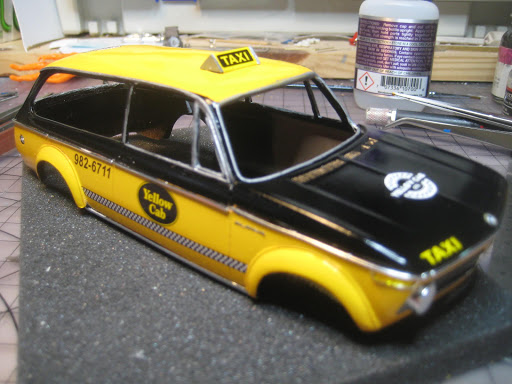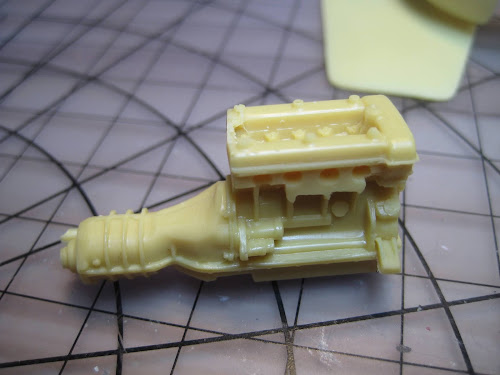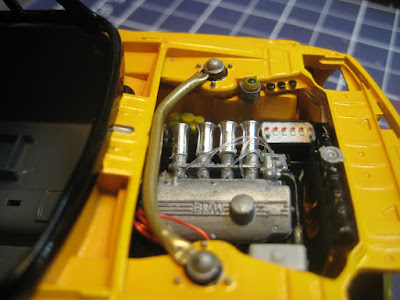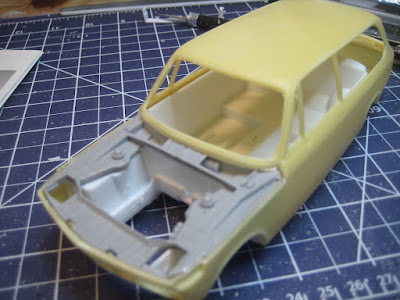This Profil 24 kit comes with doors molded into the body and with inner door panels. It also comes with a pair of doors, however.
So I got carried away and cut out the driver's door, using the tools in the picture.
The hinge was fabricated from 1 mm brass rod and narrow-wall 2 mm brass tube.
The bent 1 mm rod is inserted into the door panel into holes drilled for that purpose. (The broken fragment of door panel at the lower forward edge will be glued back in prior to paint).
The tube will be epoxied to the body when the time comes (after paint and so on).
A fair amount of bending and fiddling was required.
Here is the situation after paint, but before the hinge got glued in.
View through the right side door at the hinge, still with no epoxy to hold the hinge in. Next will be to source some 5-minute epoxy. Stay tuned!
UPDATE: I got brave and mixed up some epoxy, being careful to keep it off the hinge pin or the door. I also shimmed up the tube with some 0.030" styrene to get it all to fit. You can see where the resin of the door had to be carved away to allow it to clear the fender.
The door might not open as wide as I might have liked but it will do.
The only real flaw is that I glued the window and frame in just a little too far forward. The glue being CA, I don't want to use acetone to dislodge it as that will damage the paint as well.
All in all I am not unhappy with this. Next will be the interior door panel trim. Stay tuned!

















































